
New Amsterdam was a 17th-century Dutch settlement established at the southern tip of Manhattan Island that served as the seat of the colonial government in New Netherland. The initial trading factory gave rise to the settlement around Fort Amsterdam. The fort was situated on the strategic southern tip of the island of Manhattan and was meant to defend the fur trade operations of the Dutch West India Company in the North River. In 1624, it became a provincial extension of the Dutch Republic and was designated as the capital of the province in 1625.

New Netherland was a 17th-century colonial province of the Dutch Republic located on the east coast of what is now the United States of America. The claimed territories extended from the Delmarva Peninsula to Cape Cod. Settlements were established in what became the states of New York, New Jersey, Delaware, and Connecticut, with small outposts in Pennsylvania and Rhode Island.

The Netherlands began its colonization of the Americas with the establishment of trading posts and plantations, which preceded the much wider known colonization activities of the Dutch in Asia. While the first Dutch fort in Asia was built in 1600, the first forts and settlements along the Essequibo River in Guyana date from the 1590s. Actual colonization, with the Dutch settling in the new lands, was not as common as by other European nations.
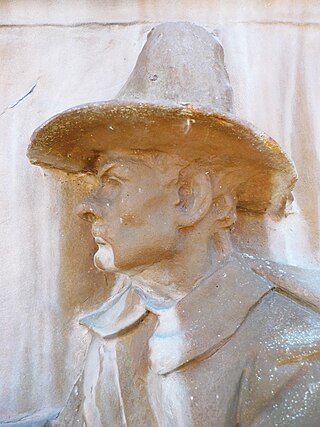
John Underhill was an early English settler and soldier in the Massachusetts Bay Colony, the Province of New Hampshire, where he also served as governor; the New Haven Colony, New Netherland, and later the Province of New York, settling on Long Island. Hired to train militia in New England, he is most noted for leading colonial militia in the Pequot War (1636–1637) and Kieft's War which the colonists mounted against two different groups of Native Americans. He also published an account of the Pequot War.
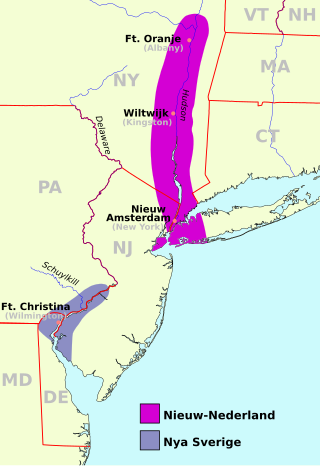
The Peach War, sometimes called the Peach Tree War, was a one-day occupation of New Amsterdam on September 15, 1655, by several hundred Munsee, followed by raids on Staten Island and Pavonia. 40 colonists were killed and over 100, mostly women and children, were taken captive.
The history of New York City has been influenced by the prehistoric geological formation during the last glacial period of the territory that is today New York City. The area was short inhabited by the Lenape; after initial European exploration in the 17th century, the Dutch established New Amsterdam in 1624. In 1664, the British conquered the area and renamed it New York.
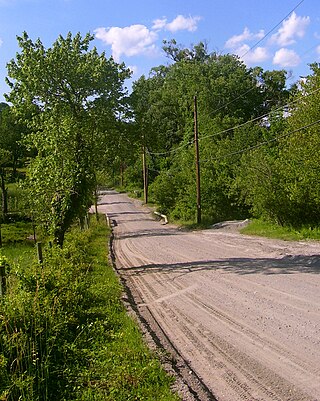
The Albany Post Road was a post road – a road used for mail delivery – in the U.S. state of New York. It connected New York City and Albany along the east side of the Hudson River, a service now performed by U.S. Route 9 (US 9).

Kieft's War (1643–1645), also known as the Wappinger War, was a conflict between the colonial province of New Netherland and the Wappinger and Lenape Indians in what is now New York and New Jersey. It is named for Director-General of New Netherland Willem Kieft, who had ordered an attack without the approval of his advisory council and against the wishes of the colonists. Dutch colonists attacked Lenape camps and massacred the inhabitants, which encouraged unification among the regional Algonquian tribes against the Dutch and precipitated waves of attacks on both sides. This was one of the earliest conflicts between settlers and Indians in the region. The Dutch West India Company was displeased with Kieft and recalled him, but he died in a shipwreck while returning to the Netherlands; Peter Stuyvesant succeeded him in New Netherland. Numerous Dutch settlers returned to the Netherlands because of the continuing threat from the Algonquians, and growth slowed in the colony.

The Wappinger were an Eastern Algonquian Munsee-speaking Native American people from what is now southern New York and western Connecticut.

The Wecquaesgeek were a Munsee-speaking band of Wappinger people who once lived along the east bank of the Hudson River in the southwest of today's Westchester County, New York, and down into the Bronx.

Pavonia was the first European settlement on the west bank of the North River that was part of the seventeenth-century province of New Netherland in what would become the present Hudson County, New Jersey.

Knight Michiel Reiniersz Pauw was a director of the Dutch West India Company (WIC) between 1621 and 1636. He is buried at at Nieuwe Kerk, Amsterdam.

Fort Nassau was a factorij in New Netherland between 1627–1651 located at the mouth of Big Timber Creek at its confluence with the Delaware River. It was the first known permanent European-built structure in what would become the state of New Jersey. The creek name is a derived from the Dutch language Timmer Kill as recorded by David Pietersen de Vries in his memoirs of his journey of 1630–1633. The Delaware Valley and its bay was called the "South River" ; the "North River" of the colony was the Hudson River. The factorij was established for the fur trade, mostly in beaver pelts, with the indigenous populations of Susquehannock, who spoke an Iroquoian language, and the Lenape, whose language was of the Algonquian family. They also wanted to retain a physical claim to the territory.

New Netherland was the 17th century colonial province of the Republic of the Seven United Netherlands on the northeastern coast of North America. The claimed territory was the land from the Delmarva Peninsula to southern Cape Cod. The settled areas are now part of the Mid-Atlantic states of New York, New Jersey, and Delaware, with small outposts in Connecticut and Pennsylvania. Its capital of New Amsterdam was located at the southern tip of the island of Manhattan on the Upper New York Bay.

New Netherlanders were residents of New Netherland, the seventeenth-century colonial outpost of the Republic of the Seven United Netherlands on the northeastern coast of North America, centered on the Hudson River and New York Bay, and in the Delaware Valley.

New Netherland, or Nieuw-Nederland in Dutch, was the 17th century colony of the Republic of the Seven United Netherlands on the northeastern coast of North America. The claimed territory included southern Cape Cod to parts of the Delmarva Peninsula. Settled areas are now part of the Mid-Atlantic states of New York, New Jersey, Connecticut, Delaware and Pennsylvania. Its capital, New Amsterdam, was located at the southern tip of the island of Manhattan on Upper New York Bay.
The Pound Ridge massacre was a battle of Kieft's War that took place in March 1644 between the forces of New Netherland and members of the Wappinger Confederacy at a village of its members in the present-day town of Pound Ridge, New York. A mixed force of 130 New Netherland soldiers led by Captain John Underhill launched a night attack on the village and destroyed it with fire. 500 to 700 members of the Wappinger Confederacy were killed while the New Netherland force lost one man killed and fifteen wounded. More casualties were suffered in this attack than in any other single incident in the war. Shortly after the battle several local Wappinger Confederacy sachems sued for peace.
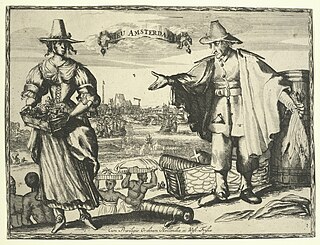
Dorothy Creole was one of the first African women to arrive in New York. She arrived in 1627. That year, three enslaved African women set foot on the southern shore of Manhattan, arriving in the Dutch colony of New Amsterdam. Property of the Dutch West India Company, these women were brought to the colony to become the wives of enslaved African men who had arrived in 1625. One of these women was named Dorothy Creole, a surname that she acquired in the New World.
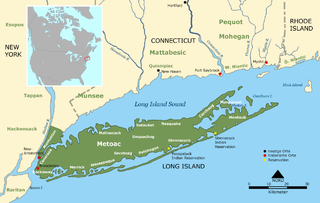
The Canarsee were a band of Munsee-speaking Lenape who inhabited the westernmost end of Long Island at the time the Dutch colonized New Amsterdam in the 1620s and 1630s.
















